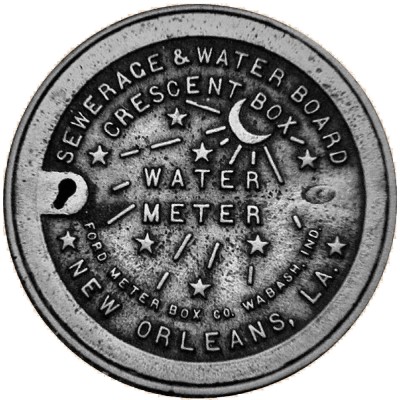

New Orleans Historian John DeMajo recalls some of his favorite places in the For sixty years preceding Hurricane Katrina, my family and I lived in New Orleans. While our home, and most of our favorite places in town were wiped out by the Katrina related flood, I wanted to share with you some of my historic New Orleans photographs of places I held near and dear. If you lived in or ever visited New Orleans, perhaps these places were near and dear to you also.
THE CHURCHES OF NEW ORLEANS AND SURROUNDING AREA MEMORIES OF GENTILLY TERRACE ELEMENTARY SCHOOL IN THE 1950s NEW ORLEANS LAKEFRONT HISTORY AND CONSTRUCTION Things I miss about Old New Orleans: The green screen doors, with Merita bread handles, on corner groceries all over New Orleans The elderly ladies who sat on their box stoops and always greeted you when you walked by Lunch at Liuzza's on Bienville Sunday evening concerts at the fountain in West End Park (Thanks to LOUIS Digital Library for use of photos) My thoughts on the recovery of New Orleans I hear every day that "New Orleans is Recovering" from the damage of Katrina. I have to admit that a lot of progress has been made in the way of demolishing damaged real estate, especially in the more economically affluent areas of the city, but the question still remains in my mind at least, if the city of New Orleans has or ever will be restored to what it was. Reflecting on this, I have come to a few conclusions that I would like to put forward. Maybe you, the reader, will not agree with my observation, but we are all entitled to our opinion. I believe that New Orleans had reached its epitome of culture and development in the period extending from the late 1940's through probably the early part of the 1970's. New Orleans had a unique culture that can never be replicated without the presence of the very elements of culture that caused it to exist in the first place. The people of various ethnic and racial designations, who melted together to form what we remember as the New Orleans of the Twentieth-Century, were the key to this perfect recipe. There have been several cultural revolutions in America that directly affected New Orleans. The immigration of the 1800's, the Great Depression, the introduction of Radio and Television as a way to expand our horizons, and the World Wars and Civil Rights Movement, all played a role in this process. The loss of many of the native New Orleanians who carried forth the traditions of their ancestors, and who remembered and were affected by the slow steady process that was New Orleans evolving through these various cultural revolutions, has been lost to a great extent. Today, in Post Katrina New Orleans, the influential forces are mainly politicians who are trying to mold New Orleans along the lines of other major U.S. Cities, young investors who see the damaged landscape as a vehicle for grabbing good deals in real estate for investment and development, and an influx of young professionals, most of whom never set foot in New Orleans prior to Hurricane Katrina, let alone in the height of the city's cultural development. Today's New Orleanians will probably never experience things like: Saint Joseph altars in musty old French Quarter shops and in shotgun houses, Mr. Bingle at Christmas time, the aroma of corner groceries with their double screen doors advertising Merita Bread, the rides at Pontchartrain Beach, musty old churches with real stained glass windows, and the old familiar bags that came from Krauss, K&B and Schwegmann. Today, there just isn't any amount of money that can buy you a cold Jax or Falstaff at Fitzgerald's, an ice cream soda from a K&B lunch counter, star burst candies fresh from the candy counter in Kress, or a ride on the Zephyr. As musician Benny Grunch so eloquently put, it in his recent Christmas offering, "It Aint Dere No More." Unfortunately, those of us who remember New Orleans in her grandeur, are dropping like flies. I was just remarking to someone the other day that I literally have more friends from my childhood and early adult life who are in the cemetery, than who are up walking around. The problem is that the younger generation today thinks that they are smarter, better educated, and more enlightened than our generation could ever be. They are not willing to listen and learn from those who walked God's green earth well before they were born, or before they received their advanced college degrees that make them experts in everything on earth. Without a sensitivity to the things that came before you, and the people who made up society and shaped the great Nation that these youngsters have inherited, it is impossible for them to discern what role all of these factors play in the construction, or in the case of New Orleans, the reconstruction of a society or culture. I am afraid that, for those of us who remember New Orleans in its heyday, the only thing that we will have as a way to identify our past, is memories, old photographs, and stories of old men and women in nursing homes. The land that was New Orleans may still be there, but I have my doubts as to whether the culture, that we so loved, and that made us what we are, will survive. John DeMajo
© 2020 by The Museum Of Yesterday, Richmond, VA. |
